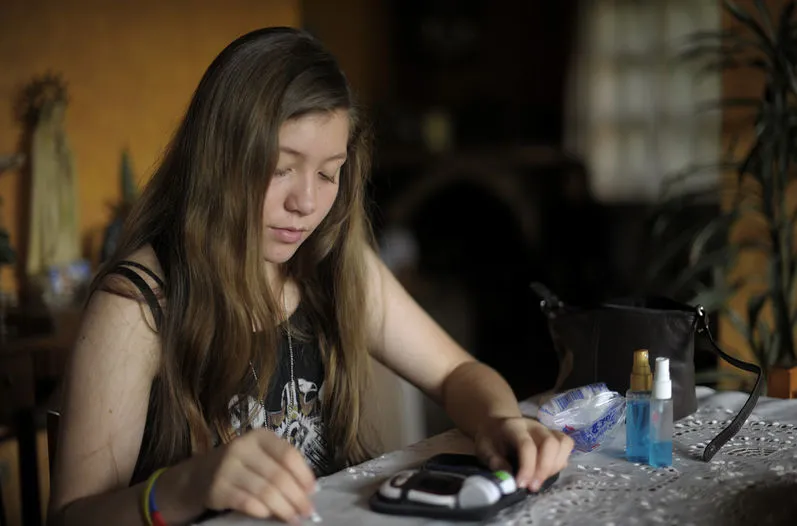Isabela calls her mother every day from school to tell her what is going to have lunch and tell her if she has little or a lot of appetite.
Before, Carolina Lizano her parent should move to the educational center at lunch and recess to provide her daughter with the necessary insulin dose according to what was going to consume and make the measurements to see their sugar levels.
Isabella Blanco is already 13 years old, so she is able to make the measurements and apply insulin injections to herself three times a day.There is still a dose that must be applied by your mother.
She is one of the 300 children living with diabetes in our country.His illness is that of type 1, also known as children's diabetes because he usually occurs at an early age.
However, what alarms doctors is that of this figure, 15% suffer from type 2 diabetes, a disease that until 10 years ago was only seen in adults and is mainly caused by hereditary factors and obesity.
According to Erick Richmond, head of Endocrinology of the National Children's Hospital, about 50 new patients with type 1 diabetes are diagnosed every year, while currently about 60 cases are currently registered in the country.
“The terrible thing is that most come from a very difficult family environment and the other is that the disease seems to be more aggressive in children, because we have noticed that they quickly begin to have complications such as sight commitment, cardiovascular problems and damage to other organsAs kidneys, ”explained the doctor.
In the case of type 1 diabetes, the cause is genetic and children born with this predisposition will inevitably present the disease.
Susana Soto, a pediatric endocrinologist in Guatemala and who participated in a Congress organized by the pharmaceutical Novo Nordisk, added that being a silent disease, many of the cases are diagnosed when the disease is already in its most serious stage, since the levels are alreadySugar are very high.
In that instance, children reach medical centers with respiratory and very dehydrated problems, and must be treated in intensive care.
However, there are factors that can be taken as alarm signs that could avoid reaching emergency situations.
"The child urinates a lot, drinks a lot of water and loses weight, if we have those symptoms plus a high glucose we can say that this patient is diabetic," Soto said.
For his part, Richmond added that in the case of type 2 diabetes, other risk factors such as family history, overweight and alterations in cholesterol and triglycerides exams should be considered.
The specialist stressed that it is important to remember that in the issue of nutrition the most predisposing food to weight gain are sugary drinks.
"The sugar per se is not a cause of diabetes, the cause of diabetes is obesity but one of the most important factors in obesity is excess sugar," he emphasized.

Life lessons
Isabella is one of the girls who describe models as patients, because they have rarely had to be hospitalized for complications of their illness and that is because it meets the three pillars (adequate nutrition, physical activity and follows at the foot of theletter the medication).
In his case, the disease appeared when it had only a year and a half and since then had to face a childhood between needles and care.
His mother remembers that one of the most difficult stages they faced was during school, because the birthday parties with cakes and piñatas meant a challenge that they only exceeded with the help of God and the attitude of their daughterwho qualifies as a champion.
Similar situation lived Paula, whose condition even led her mother to create a line of special food products for people with diabetes, called Sweet Treats, which today is a coffee shop chain.
His mother, Ana Ortega says that Paula was diagnosed when she was four years old and had even been admitted to intensive care.
"The first three years were very devastating, until we started thinking that there should be a purpose," Ana said.
The same deprivations that his daughter had to face and the little offer that was at that time of healthy products was what made her start changing recipes and today they even lead a support group for parents and children with diabetes called Dia Vida.
For Paula, who is already 20 years old and is a nutrition student one of the most complicated stages was when he entered school because he did not want anyone to realize his illness.
"At that time one does not want to be different, having to be disciplined and for example not being able to eat ice cream after classes is difficult," Ana, her mother said.
Both moms agree that having a child with diabetes is not only an issue of adapting to treatments, but also changes the dynamics of the whole family and a commitment of caregivers whose reward is undoubtedly the quality of life of their offspring.


